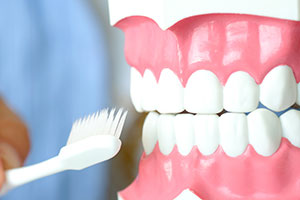
Do You Have Bleeding Gums?
When brushing your teeth and flossing, there should never be any sign of bleeding gums. However, many people continue to experience this issue. Find out the major causes and possible implications.
Periodontal Disease
The most severe potential cause of bleeding gums is periodontal disease. An infection of the gum tissue, it can cause red, swollen, bleeding gums, as well as bad breath. If left untreated, more advanced stages of the disease can even lead to tooth loss. If you have bleeding gums due to periodontal disease, don’t wait for the condition to worsen. It’s unlikely to get better on its own, so it’s highly recommended to seek an evaluation as soon as possible. With modern periodontal treatments, we have many tools at our disposal to combat the condition.
Other Causes of Bleeding Gums:
Your brushing and flossing techniques may need some improvement!
Brushing
You may think that you’re doing an excellent job by cleaning your teeth thoroughly. But if you vigorously scrub and scour your teeth while brushing, you’re not doing them any favors. Brushing teeth too hard (or using bristles that are too stiff) can cause toothbrush abrasion. That’s when your tooth enamel is scratched and scrubbed away!
Instead, use only a soft-bristled toothbrush, and be sure to angle the bristles away from the gums when brushing the front, back, or sides of your teeth. This technique will help prevent irritation to the sensitive tissue and avoid bleeding gums!
Flossing
Bleeding when flossing is never “normal.” However, it may often occur if you’re first trying to begin (or reinitiating yourself) with this helpful hygiene habit.
When flossing, the proper technique involves lateral, side-to-side pressure. Never pull the floss forcefully down toward your gums. That’s the quicked way to cause severe laceration and injury to your gums.
Instead, hold either end of the floss and form a “C” shape around the tooth. Then, clean by gently guiding the floss along the side of the tooth. This method will prevent problems while flossing!
